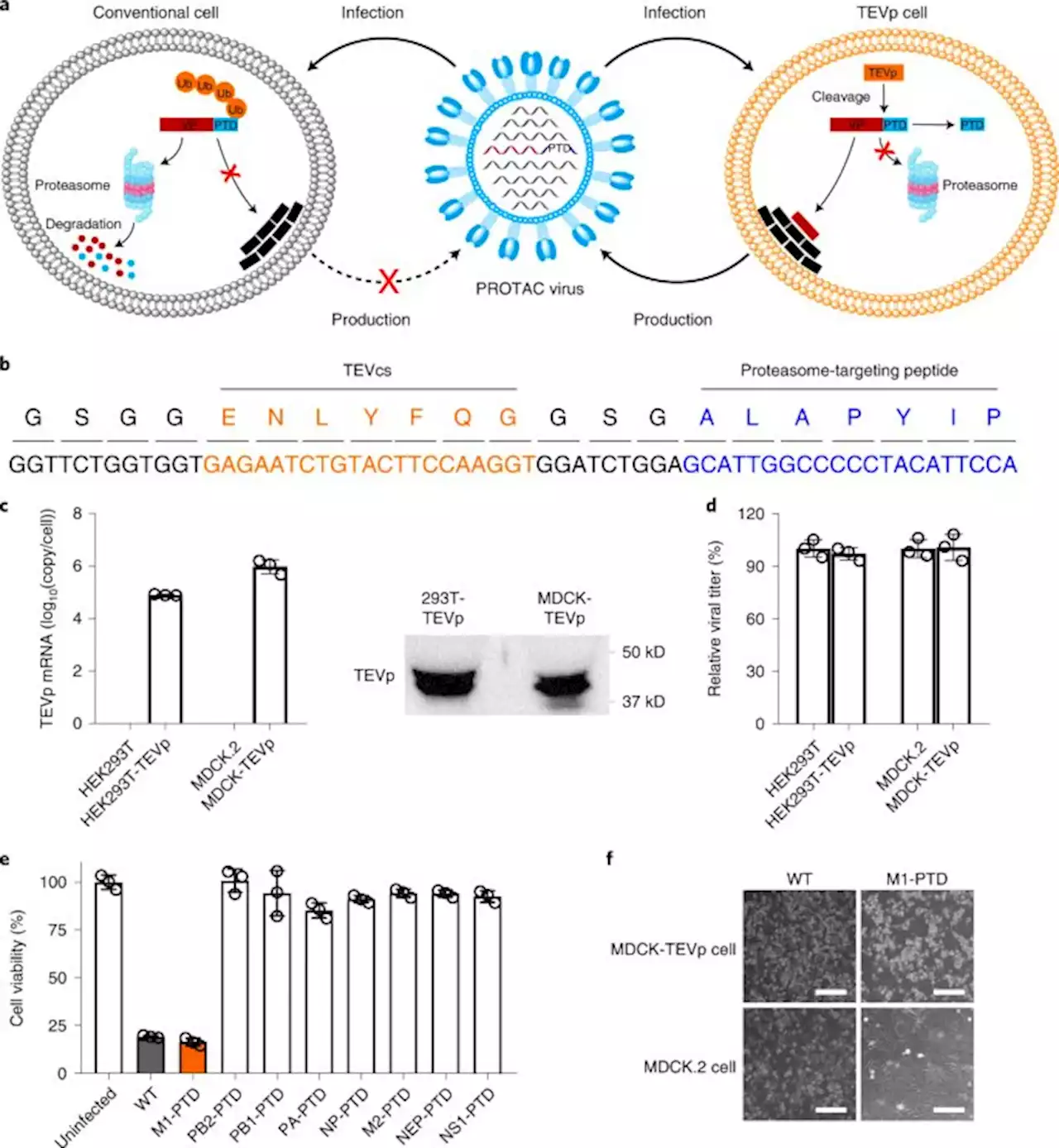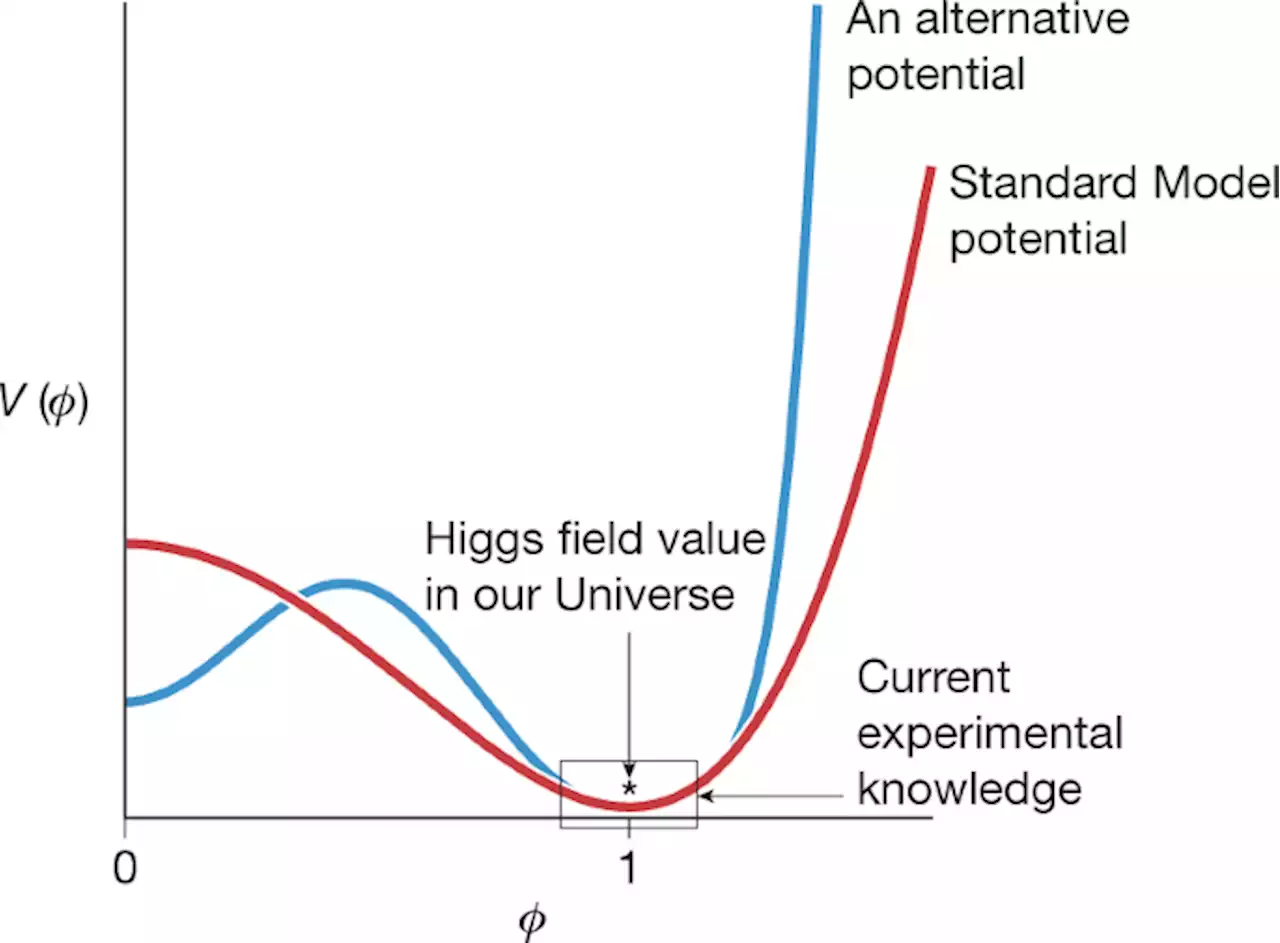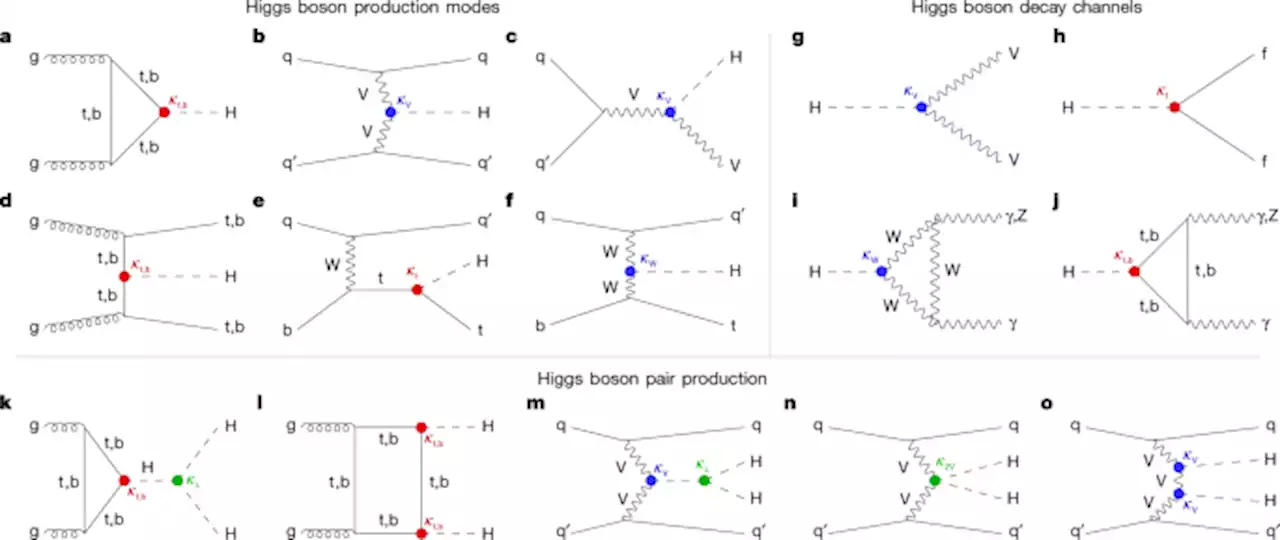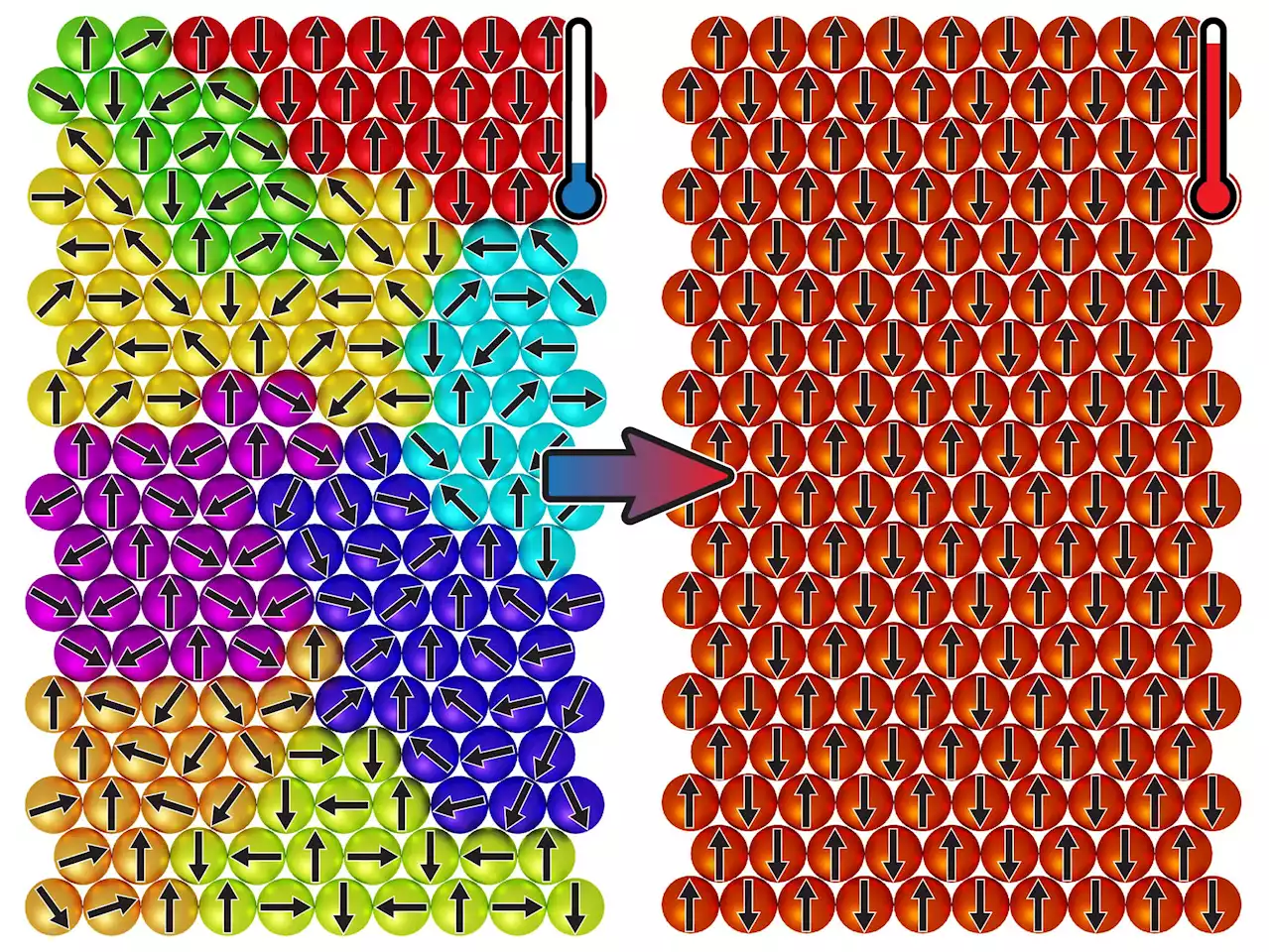Physicists observed a very strange new type of behavior in a magnetic material when it’s heated up. When the temperature rises, the magnetic spins ‘freeze’ into a static pattern, a phenomenon that normally occurs when the temperature decreases. Their findings were published in Nature Physics today,
At cooler temperatures, the spins in the material form random patterns, where each pattern whirls like a helix with a particular twist. When heating up the material, the spins choose one of the particular helix patterns, a phenomenon that normally occurs when the temperature decreases in magnetic materials. Credit: Radboud University
Neodymium is not like conventional spin glasses, where there is random mixing of magnetic materials. It is an element and without significant amounts of any other material, shows glassy behavior in its crystalline form. The spins form patterns that whirl like a helix, and this whirling is random and constantly changes.
These kinds of phenomena are not found often in nature. There are very few materials known that behave in the wrong way. Another well-known example is the Rochelle salt, where charges build up and form an ordered pattern at a higher temperature, where at a lower temperature they are randomly distributed.The complex theoretical description of spin glasses was the subject of the Nobel Prize in Physics awarded to Parisi in 2021.
United States Latest News, United States Headlines
Similar News:You can also read news stories similar to this one that we have collected from other news sources.
 Generation of a live attenuated influenza A vaccine by proteolysis targeting - Nature BiotechnologyInfluenza virus is attenuated for vaccine production using PROTAC degradation technology.
Generation of a live attenuated influenza A vaccine by proteolysis targeting - Nature BiotechnologyInfluenza virus is attenuated for vaccine production using PROTAC degradation technology.
Read more »
 A multiplex implantable microdevice assay identifies synergistic combinations of cancer immunotherapies and conventional drugs - Nature BiotechnologyA multiplex implantable microdevice assay identifies synergistic combinations of cancer immunotherapies and conventional drugs
A multiplex implantable microdevice assay identifies synergistic combinations of cancer immunotherapies and conventional drugs - Nature BiotechnologyA multiplex implantable microdevice assay identifies synergistic combinations of cancer immunotherapies and conventional drugs
Read more »
 Twentieth-century Azores High expansion unprecedented in the past 1,200 years - Nature GeoscienceThe Azores High over the North Atlantic has expanded due to anthropogenic climate change, disrupting precipitation patterns in western Europe, according to climate modelling and precipitation proxy records spanning the past millennium.
Twentieth-century Azores High expansion unprecedented in the past 1,200 years - Nature GeoscienceThe Azores High over the North Atlantic has expanded due to anthropogenic climate change, disrupting precipitation patterns in western Europe, according to climate modelling and precipitation proxy records spanning the past millennium.
Read more »
 The Higgs boson turns ten - NatureTen years since the discovery of the Higgs boson, the exploration of the Higgs sector, as this overview shows, has progressed far beyond original expectations, but many research questions still remain open.
The Higgs boson turns ten - NatureTen years since the discovery of the Higgs boson, the exploration of the Higgs sector, as this overview shows, has progressed far beyond original expectations, but many research questions still remain open.
Read more »
 A new phase of the Cancer Moonshot to end cancer as we know it - Nature MedicineImproved screening, novel therapies and a focus on health equity can reduce cancer mortality by 50% in the next 25 years, but these must be underpinned by an investment in basic, translational and clinical research, along with open data.
A new phase of the Cancer Moonshot to end cancer as we know it - Nature MedicineImproved screening, novel therapies and a focus on health equity can reduce cancer mortality by 50% in the next 25 years, but these must be underpinned by an investment in basic, translational and clinical research, along with open data.
Read more »
 A portrait of the Higgs boson by the CMS experiment ten years after the discovery - NatureThe most up-to-date combination of results on the properties of the Higgs boson is reported, which indicate that its properties are consistent with the standard model predictions, within the precision achieved to date.
A portrait of the Higgs boson by the CMS experiment ten years after the discovery - NatureThe most up-to-date combination of results on the properties of the Higgs boson is reported, which indicate that its properties are consistent with the standard model predictions, within the precision achieved to date.
Read more »
